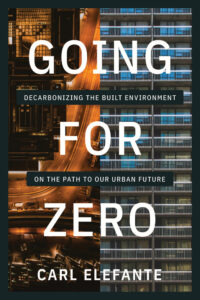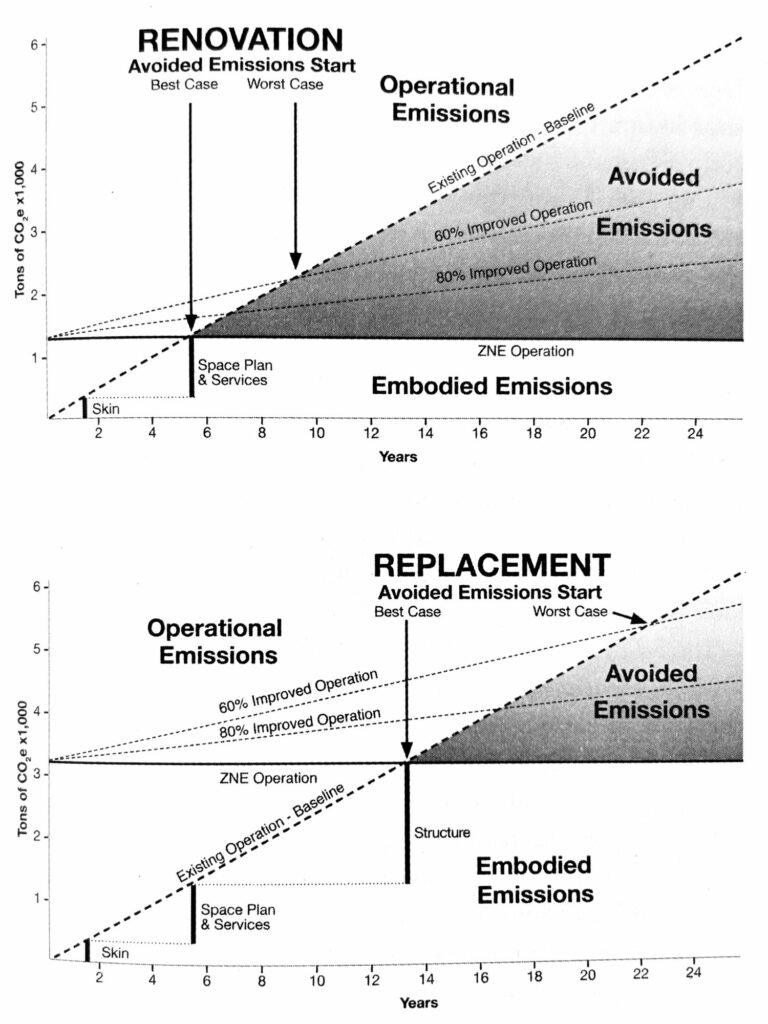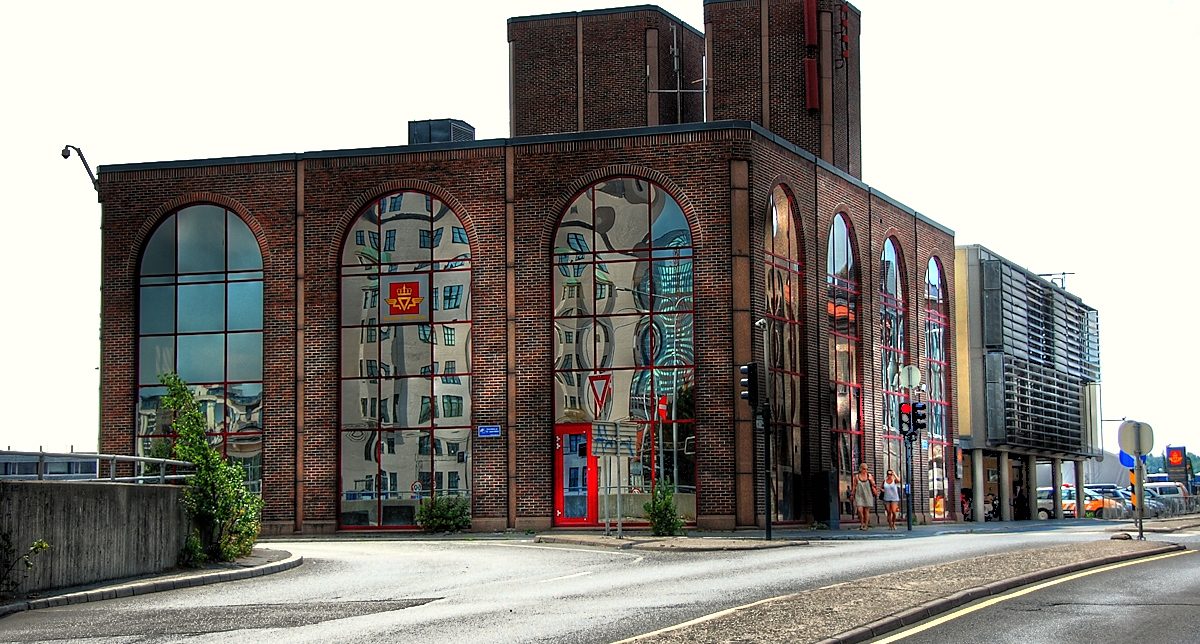 Carl Elefante’s Going for Zero: Decarbonizing the Built Environment on the Path to Our Urban Future broadens the horizon about how architecture can move toward a carbon-free future and achieve it. Elefante, who served as the 2018 National AIA president, writes about the valuable lessons that our built heritage can teach us. He is concerned that architects have forgotten, or never learned, how to build intelligently—that new buildings are inferior to our built heritage when it comes to such factors as proper site orientation, building for environmental performance, daylighting, natural ventilation, etc. Many architects believe that there’s always a “technology fix” to improve building performance, so sensitive design isn’t really necessary. Elefante calls for us look at the native genius of traditional architecture and to shift our attention from building anew to retrofiting and rehabilitating, extending the life of older buildings.
Carl Elefante’s Going for Zero: Decarbonizing the Built Environment on the Path to Our Urban Future broadens the horizon about how architecture can move toward a carbon-free future and achieve it. Elefante, who served as the 2018 National AIA president, writes about the valuable lessons that our built heritage can teach us. He is concerned that architects have forgotten, or never learned, how to build intelligently—that new buildings are inferior to our built heritage when it comes to such factors as proper site orientation, building for environmental performance, daylighting, natural ventilation, etc. Many architects believe that there’s always a “technology fix” to improve building performance, so sensitive design isn’t really necessary. Elefante calls for us look at the native genius of traditional architecture and to shift our attention from building anew to retrofiting and rehabilitating, extending the life of older buildings.
Thanks to a career as a preservation architect, Elefante writes passionately about the environmental design lessons he’s learned from designers and builders across centuries. “Working with existing buildings taught me how much better traditional building materials and technology are than many of their modern-day counterparts,” he states.
Going for Zero is organized in four sections: “Climate Imperative,” articulating the present environmental catastrophe on our doorstep; “Justice Imperative,” linking our climate response to environmental and social justice; “Urban Imperative,” recognizing the city as the future of human habitation; and “Beyond Modern,” calling for a new approach to an architecture free of Global North bias.
He notes that in the name of energy conservation, building and energy codes favor sealed buildings that require constant and continuous energy use. Without power, these buildings are uninhabitable. Why not instead focus on climate-adapted design, he asks, which has distinguished heritage buildings for thousands of years?
He writes that one of the greatest misunderstandings in today’s accepted building-sector decarbonization beliefs is that constructing new energy-efficient buildings reduces cumulative operational emissions (carbon released by building operation). But, he warns, “more buildings equals more energy demand and carbon emissions, period.” It also means that every time we choose to demolish instead of preserve an older building in order to construct a new one, we contribute to carbon emissions and mountains of waste.
 Elefante includes an illuminating diagram that shows how renovation, rehab, and retrofit avoid more carbon emissions than new replacement construction, which boosts embodied emissions (released in material extraction, manufacture, transportation, and construction). He points out that embodied emissions are equal to at least 20 years of operational emissions. “Building reuse is climate action,” he states. “Decarbonization goals can only be achieved rapidly and completely through building renewal.”
Elefante includes an illuminating diagram that shows how renovation, rehab, and retrofit avoid more carbon emissions than new replacement construction, which boosts embodied emissions (released in material extraction, manufacture, transportation, and construction). He points out that embodied emissions are equal to at least 20 years of operational emissions. “Building reuse is climate action,” he states. “Decarbonization goals can only be achieved rapidly and completely through building renewal.”
More than a half-million buildings are demolished in the U.S. every year, and the impact on landfills borders on the unbelievable: “Annual building demolition generates nearly double the waste landfilled by all U.S. cities and towns combined.” Two-thirds of that demo waste is concrete. That’s a lot of carbon.
He credits the Congress for the New Urbanism and models such as the 15-Minute City for moving us toward people-centered urban design, more walkability, public transit-centered development, and mixed uses—all of which fight carbon emissions.
He points out that “the legal and financial framework of the planning, architecture, engineering, construction, and development professions focus on delivering projects, period.” Which leads him to conclude: “During the careers of architects practicing now, everything about the design, construction, and operation of buildings must be retooled to eliminate the greenhouse gas pollution causing climate change.” It’s a tall order, and we should thank Carl Elefante for laying it out. Let’s hope it’s not too late.
You can read the original article at commonedge.org

